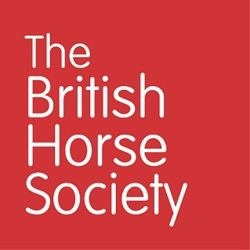| 1. Understand how to maintain a horse’s training for jumping |
1.1 Explain how to introduce a horse to jumping |
Introduction to jumping to include;
- The development of all three paces
- Working over poles in trot and canter
- Using placing and ground poles
- Distances
- How to work over the first fence
- Introducing a second fence
- Moving beyond two fences
|
Discussion |
| 1.2 Explain how to progress a horse’s jumping |
Progression of jumping to include;
- The use of poles
- Progressive use of grid work
- Gymnastic jumping
- Working over fences at related distances
- Using cross country jumps
|
Discussion |
| 2. Be able to ride a horse over show jumps |
2.1 Assess the show jump course |
Assessment to include;
- Walk the show jump course
- Course plan and sequence of fences
- The lines and distances between fences
- The strategy for riding a show jump course
- Identify any potential challenges
|
Discussion |
| 2.2 Prepare the horse for jumping |
Preparation to include;
- Logical plan of work
- Walk, trot and canter on both reins
- Lengthening and shortening of stride and control of direction
- Riding forward in a balanced, light seat
- Establishing rhythm and balance in the canter
- Awareness of others
|
Observation |
| 2.3 Warm up over fences in preparation for jumping a course |
Warm up to include;
- Cross pole
- Upright
- Spread
|
Observation |
| 2.4 Ride a horse over a course of jumps |
To include;
- Up to eight fences ranging in height from 80cm to 90cm, a minimum of two fences to be 90cm
- Ride over various fences and lines
- A double, related distance, two changes of direction and a minimum of three spread fences
- The use of fences for schooling the horse to maintain training
|
Observation |
| 2.5 Ride with an independent balanced position |
Independent balanced position to include;
- Independence from the rein aids
- Balanced alignment in a jumping position with a secure lower leg
- Core strength in upper body maintained between, approaching, over and riding away from fences
- The ability to ride forward from the leg aid to the contact without a compromise of position
- Ride in harmony with the horse using sympathetic aids
|
Observation |
| 2.6 Ride safely |
Riding safely to include;
- Use sympathetic aids riding walk, trot, canter
- Awareness of other users of the school
- Show respect and consideration for the horse and other riders
|
Observation |
| 2.7 Evaluate the show jump round |
Evaluation to include;
- Pace of the horse
- Lines and corners
- Manner of jumping
- Control of the horse
- Problems/issues with the horse’s way of going
- Own performance
|
Discussion |
| 3. Be able to ride a horse over a cross country course |
3.1 Assess the cross country course |
Assessment to include;
- Walk the cross country course
- Follow the course plan and sequence of fences
- Lines between fences
- Strategy for riding the cross country fences to include pace of horse
- Terrain and weather conditions
|
Discussion |
| 3.2 Prepare the horse to jump a cross country course |
Preparation to include;
- Working to a logical plan
- Canter on both reins
- Moving the horse forward, increasing the pace and slowing down
- Working over practice fences
- Establishing rhythm and balance in the canter
|
Observation |
| 3.3 Ride a horse over a cross country course |
To include;
- Minimum of eight jumping efforts up to 80cm which may include: bank, rail, brush, spread, ditch and a combination of at least two related fences
- The use of fences for schooling the horse to maintain training
|
Observation |
| 3.4 Ride with an independent balanced position |
Independent balanced position to include;
- Independence of the rein aids
- Balanced alignment in a jumping position with a secure lower leg
- Core strength in upper body maintained between, approaching, over and riding away from fences
- The ability to ride forward from the leg aid to the contact without a compromise of position
- Ride in harmony with the horse using sympathetic aids
|
Observation |
| 3.5 Ride safely |
Riding safely to include;
- Use sympathetic aids riding walk, trot, canter
- Awareness of other users of the school
- Show respect and consideration for the horse and other riders
|
Observation |
| 3.6 Evaluate the cross country round |
Evaluation may include;
- The pace
- Lines and turns
- Manner of jumping
- Control of the horse
- Problems/issues with the horse’s way of going
- Ground surface
- Rider effectiveness
|
Discussion |
